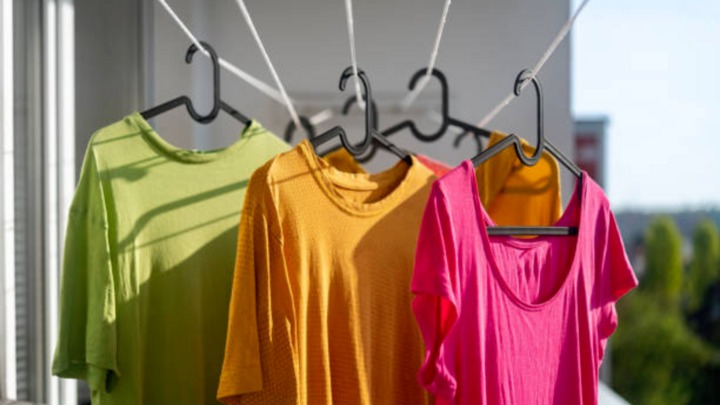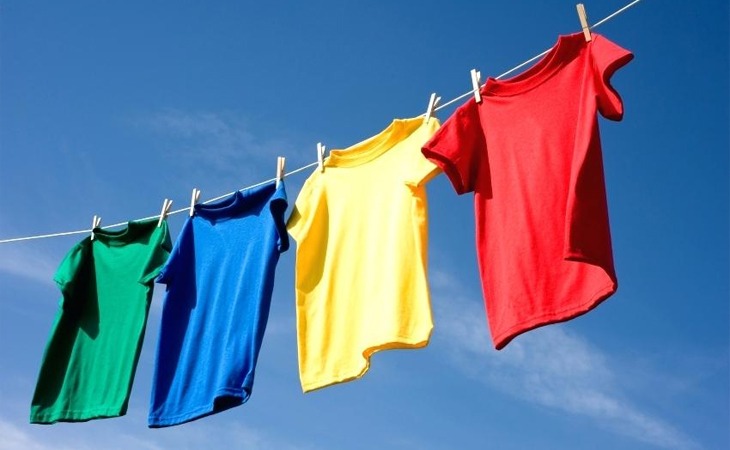Is it a good idea to dry clothes, bedding, and curtains using the heat emitted by the outdoor unit of an air conditioner? Many people have considered this idea, especially those with limited living space or those looking for ways to save time.
The outdoor unit, also known as the condenser unit, is responsible for dissipating heat into the environment when the air conditioner is in use. This crucial component ensures the smooth operation of one-way or two-way air conditioning systems.
Should you dry clothes, bedding, and curtains on the outdoor unit of an air conditioner?
Some individuals use the outdoor unit as a drying area for their laundry due to space constraints or in an effort to expedite the drying process. The unit emits a significant amount of heat during its operation, making it tempting to use for this purpose. However, it is not advisable to dry clothes, bedding, or curtains on the outdoor unit.
While doing so may lead to faster drying times compared to natural drying methods, the high temperatures produced by the outdoor unit can damage the fabric fibers. This can cause the fabric to become stiff and prone to deterioration. Additionally, sensitive materials such as down or wool can easily lose their shape or insulating properties when exposed to the intense heat.

Some people use the outdoor unit of their air conditioner as a drying area, either due to limited living space or in an effort to save time.
Furthermore, the outdoor unit is typically installed outdoors on a balcony or similar location, exposing it directly to dust and bacteria. Drying clothes on the unit increases the likelihood of these contaminants being transferred to the fabric, potentially causing allergies, skin irritation, and other dermatological issues.
Most importantly, the outdoor unit is an electrical appliance, and extreme temperatures or technical malfunctions pose a fire hazard. Since clothing and bedding are flammable materials, drying them on the unit increases the risk of fire or damage to the appliance itself.
Drying clothes on the outdoor unit also obstructs airflow around the equipment, reducing its efficiency. This interference can impact the cooling or heating performance of the air conditioner and result in increased energy consumption.
For these reasons, it is recommended to refrain from drying clothes, bedding, and curtains on the outdoor unit of an air conditioner. Instead, explore alternative methods to dry your laundry efficiently.
Suggested locations for drying clothes, bedding, and curtains:
If your household has limited space for drying laundry, consider the following suggestions to expedite the drying process for clothes, bedding, and curtains:
Use a clothes dryer: A dryer not only speeds up the drying process but also sanitizes and removes fine dust particles from your laundry. Many models offer temperature adjustment settings to suit different fabric types, ensuring optimal protection and safety.
Indoor drying: Opt for well-ventilated and dry areas such as windowsills or balconies. If a clothes dryer is not available, hang your clothes indoors and utilize the dehumidification mode of your air conditioner to aid in the drying process.

For households with limited space, consider alternative drying methods such as using a clothes dryer or indoor drying in well-ventilated areas.
Drying under a porch or awning: This method shields sensitive fabrics from direct sunlight and provides protection from rain.
For those residing in apartment complexes or communal living settings, where drying clothes near the outdoor unit may be unavoidable, it is essential to take the following precautions:
Consider the placement of the outdoor unit: Aim to avoid positioning the unit’s airflow directly onto the drying clothes.
Refrain from drying above the unit: This prevents water from dripping onto the unit and causing potential damage.
Squeeze out excess water before hanging: By removing excess moisture, you minimize the risk of water dripping onto the unit and maintain better hygiene and longevity of the unit.
Implementing these suggestions will not only expedite the drying process but also ensure the safety and preservation of your garments.





































